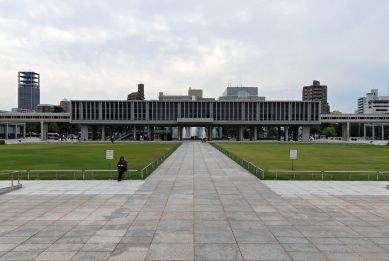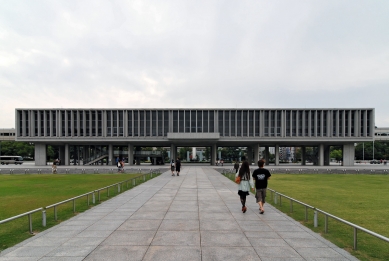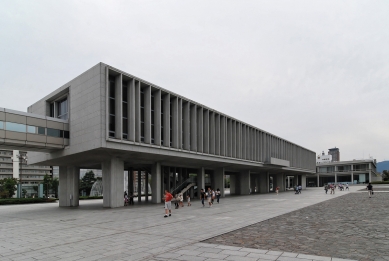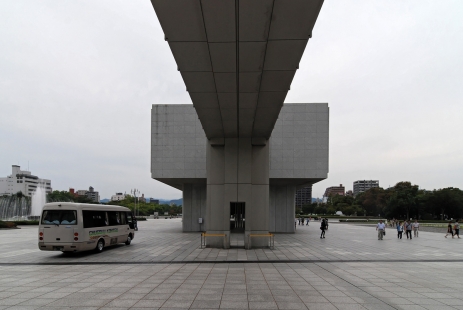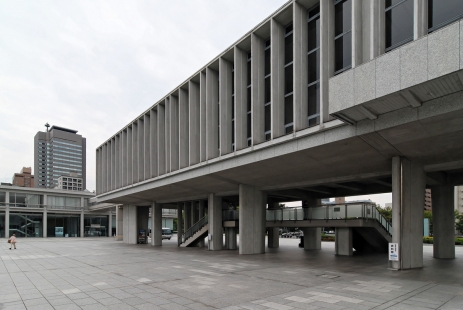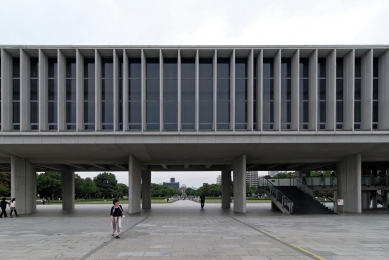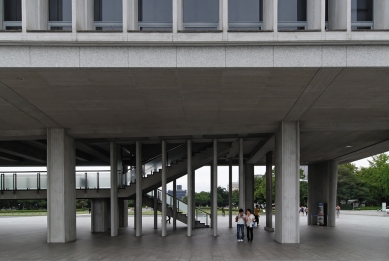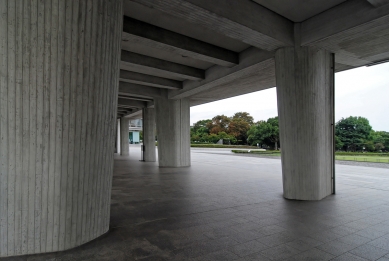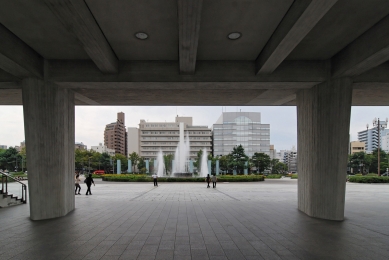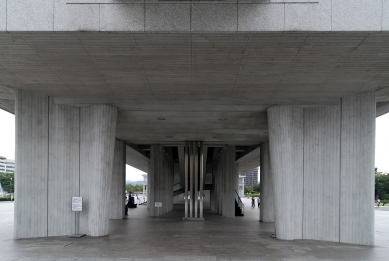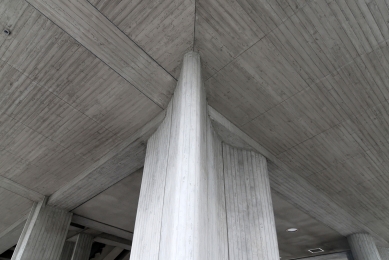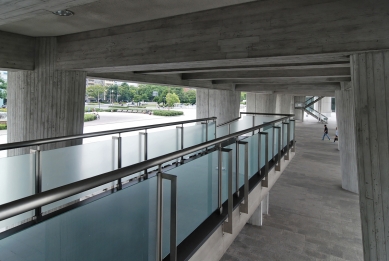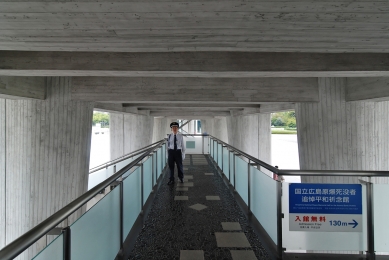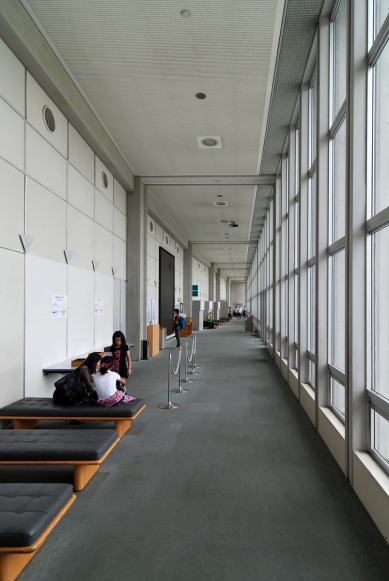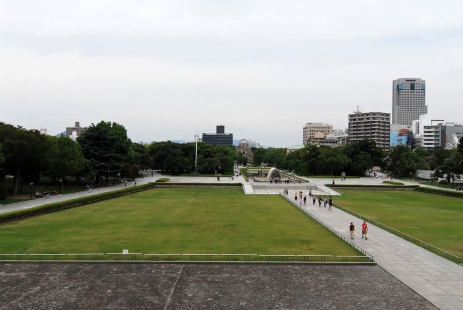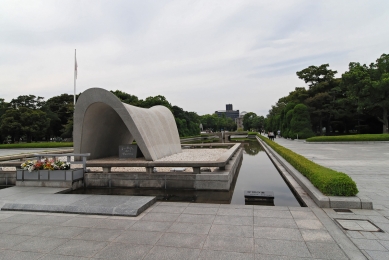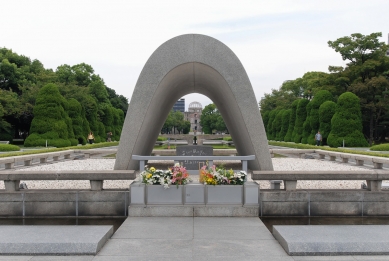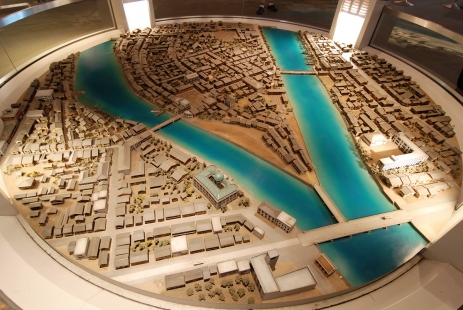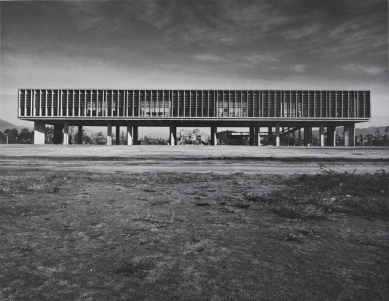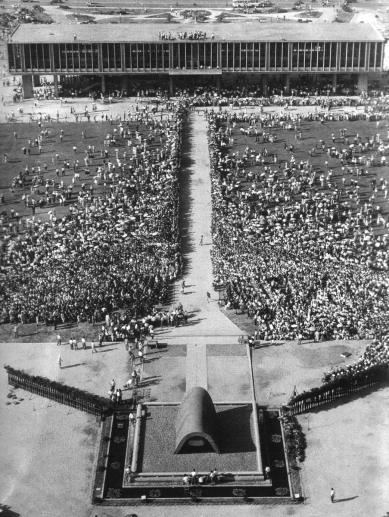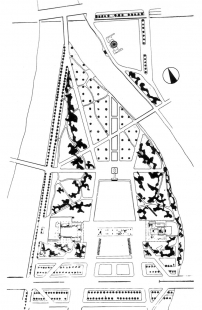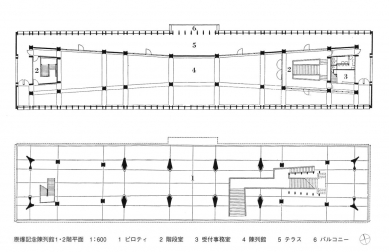
Hiroshima Peace Memorial Museum

On August 6, 1945, at 8:15 local time, an American B-29 bomber dropped the world's first atomic bomb half a kilometer above the Japanese city of Hiroshima, leveling all buildings within a five-kilometer radius and causing the immediate death of tens of thousands of residents. In an instant, the advanced city lay in ruins. This tragedy accelerated the end of World War II. The Japanese saw the devastated city as an opportunity for a complete renovation. The Post-War Reconstruction Institute was created, which was responsible for the dramatic transformation of the decimated country into a place of cutting-edge architectural avant-garde and visionary urban planning.
One of the first architectural competitions in post-war Japan was for a peace center and memorial park in Hiroshima, which was won by the thirty-three-year-old native of Osaka and recent graduate of postgraduate studies at Tokyo University, Kenzō Tange. He invited the prominent sculptor Isamu Noguchi to design a stone arch in front of the memorial. However, Noguchi had an American mother, which did not fit well with the post-war situation at the time, and the approval committee did not allow him to build it. A small consolation was that Noguchi was later allowed to construct the railings on the access bridges leading to the island with the memorial park.
At that time, there was not even grass growing on the site, and there were fears that radiation would kill a person instantly. Nevertheless, Tange went to the site with three other colleagues to begin planning the city's recovery and preparing the peace park with the memorial. The resulting linear concrete structure is based on the five points of modern architecture defined by Le Corbusier, but also respects Japanese building traditions, though transformed into a reinforced concrete construction.
Perpendicular to the building on massive concrete legs runs a long north-south axis oriented toward the epicenter above the Atomic Dome (Hiroshima Prefectural Product Exhibition Hall from 1915 by Czech architect Jan Letzel, listed as a UNESCO cultural heritage site).
Tange is also the author of the cenotaph erected in memory of the victims of the explosion. In addition to the names of all the deceased, it bears the inscription: “Rest in peace. We will not repeat the same mistakes.”
The story of the Hiroshima memorial also marks the beginning of a fruitful and long career for Kenzō Tange, whose projects helped resurrect Japan from the ashes in the second half of the last century.
 |
| photo: © Ishimoto Yasuhiro, 1953 |
One of the first architectural competitions in post-war Japan was for a peace center and memorial park in Hiroshima, which was won by the thirty-three-year-old native of Osaka and recent graduate of postgraduate studies at Tokyo University, Kenzō Tange. He invited the prominent sculptor Isamu Noguchi to design a stone arch in front of the memorial. However, Noguchi had an American mother, which did not fit well with the post-war situation at the time, and the approval committee did not allow him to build it. A small consolation was that Noguchi was later allowed to construct the railings on the access bridges leading to the island with the memorial park.
At that time, there was not even grass growing on the site, and there were fears that radiation would kill a person instantly. Nevertheless, Tange went to the site with three other colleagues to begin planning the city's recovery and preparing the peace park with the memorial. The resulting linear concrete structure is based on the five points of modern architecture defined by Le Corbusier, but also respects Japanese building traditions, though transformed into a reinforced concrete construction.
Perpendicular to the building on massive concrete legs runs a long north-south axis oriented toward the epicenter above the Atomic Dome (Hiroshima Prefectural Product Exhibition Hall from 1915 by Czech architect Jan Letzel, listed as a UNESCO cultural heritage site).
Tange is also the author of the cenotaph erected in memory of the victims of the explosion. In addition to the names of all the deceased, it bears the inscription: “Rest in peace. We will not repeat the same mistakes.”
The story of the Hiroshima memorial also marks the beginning of a fruitful and long career for Kenzō Tange, whose projects helped resurrect Japan from the ashes in the second half of the last century.
The English translation is powered by AI tool. Switch to Czech to view the original text source.
0 comments
add comment


